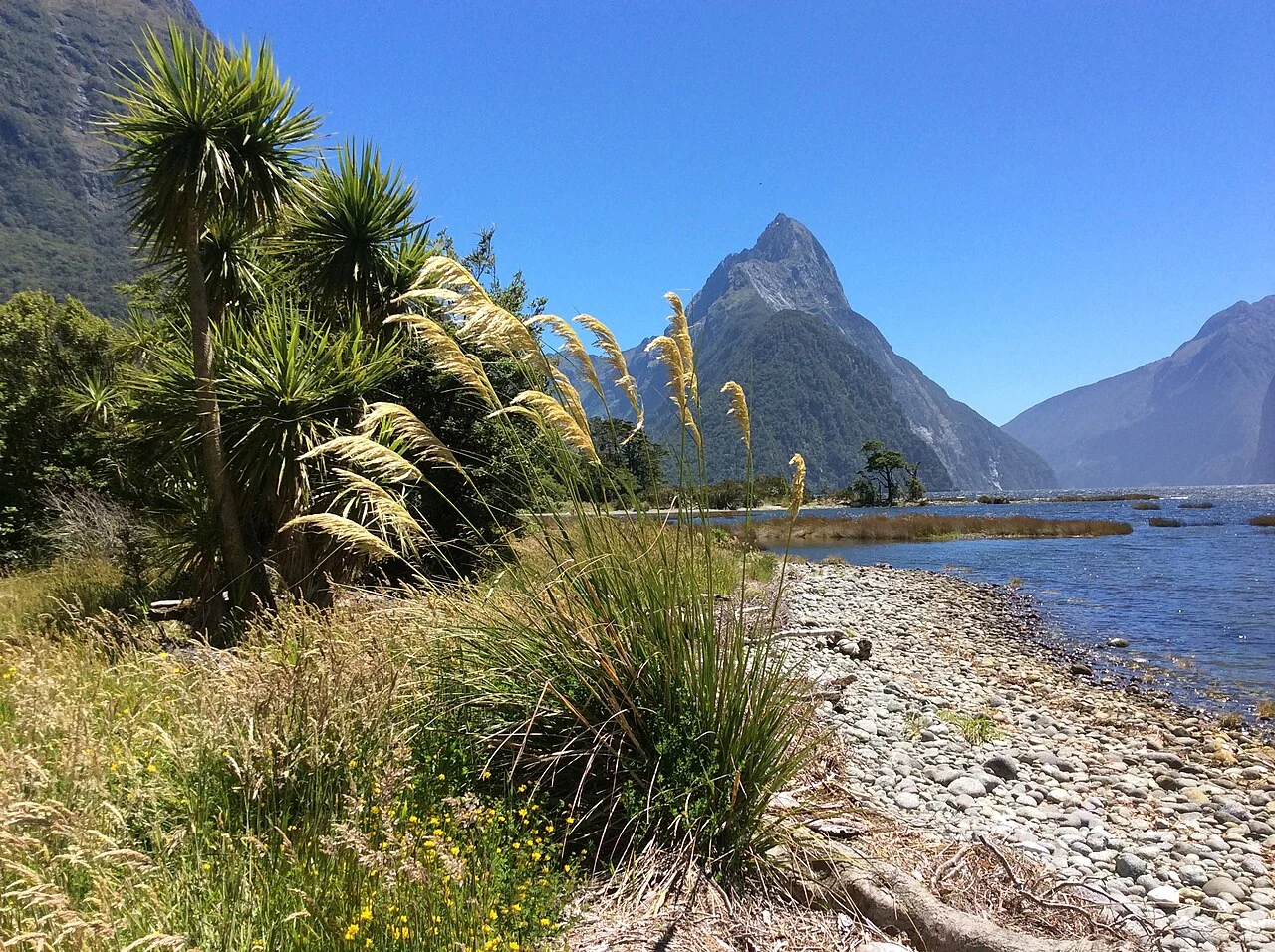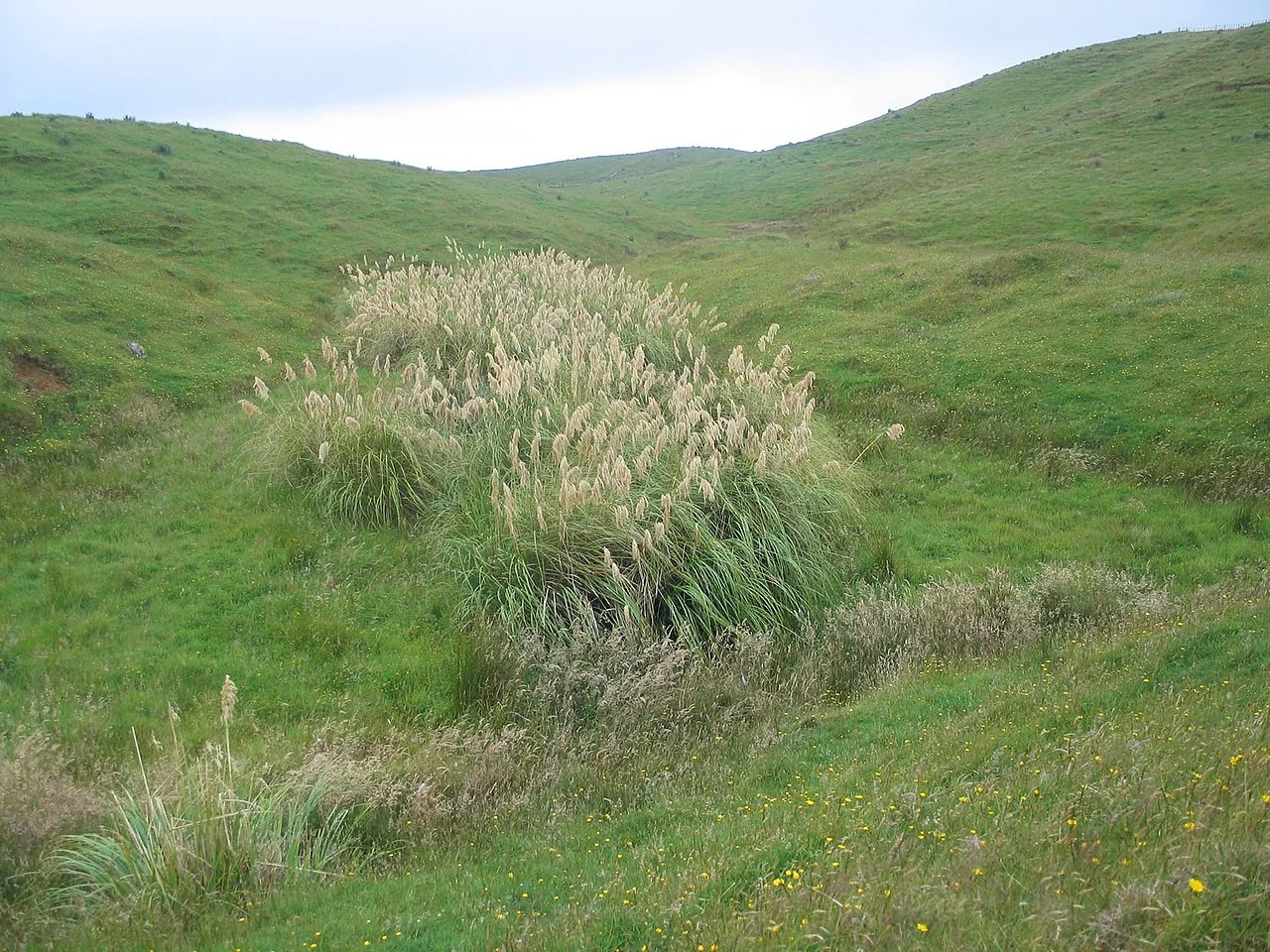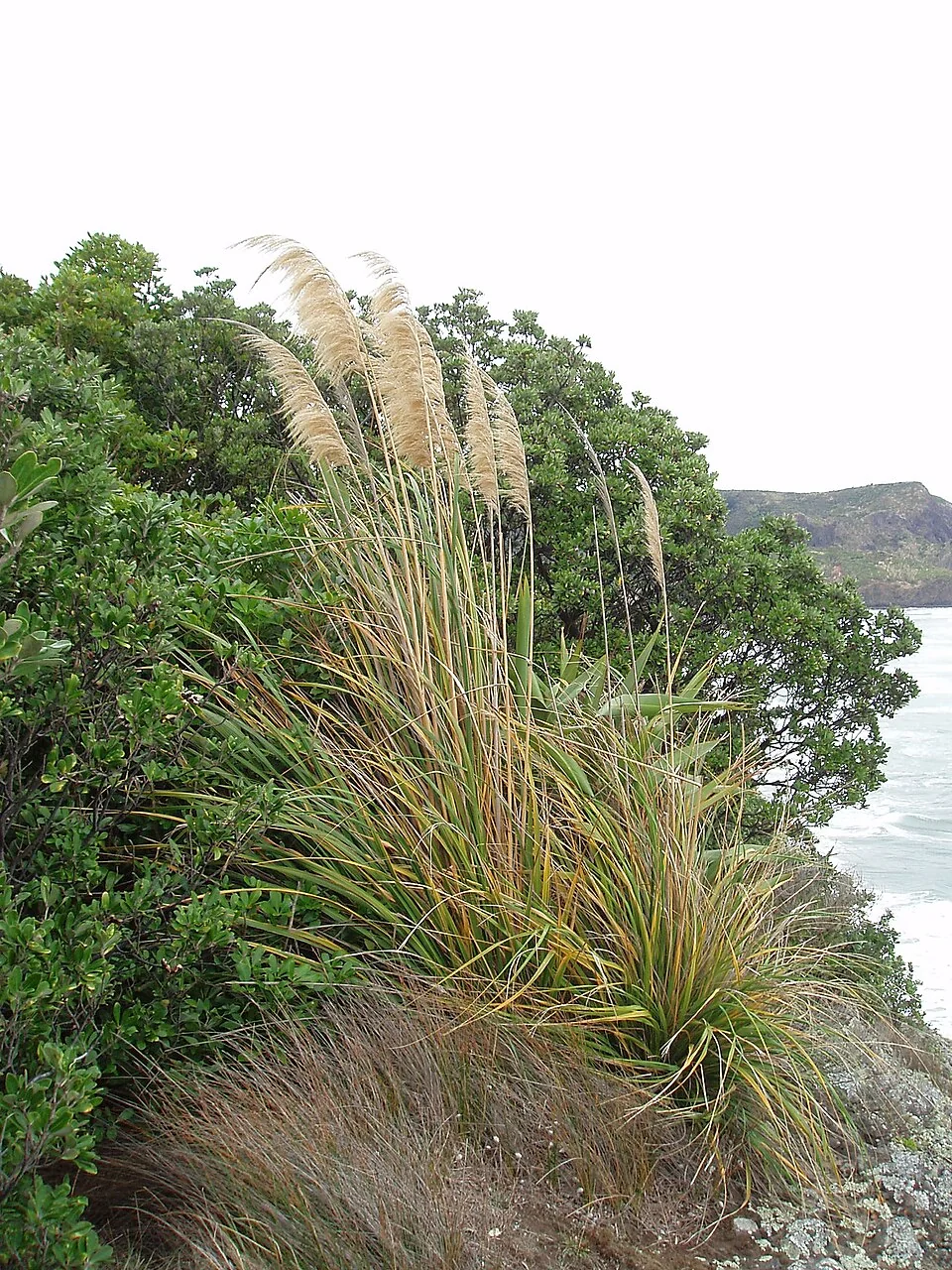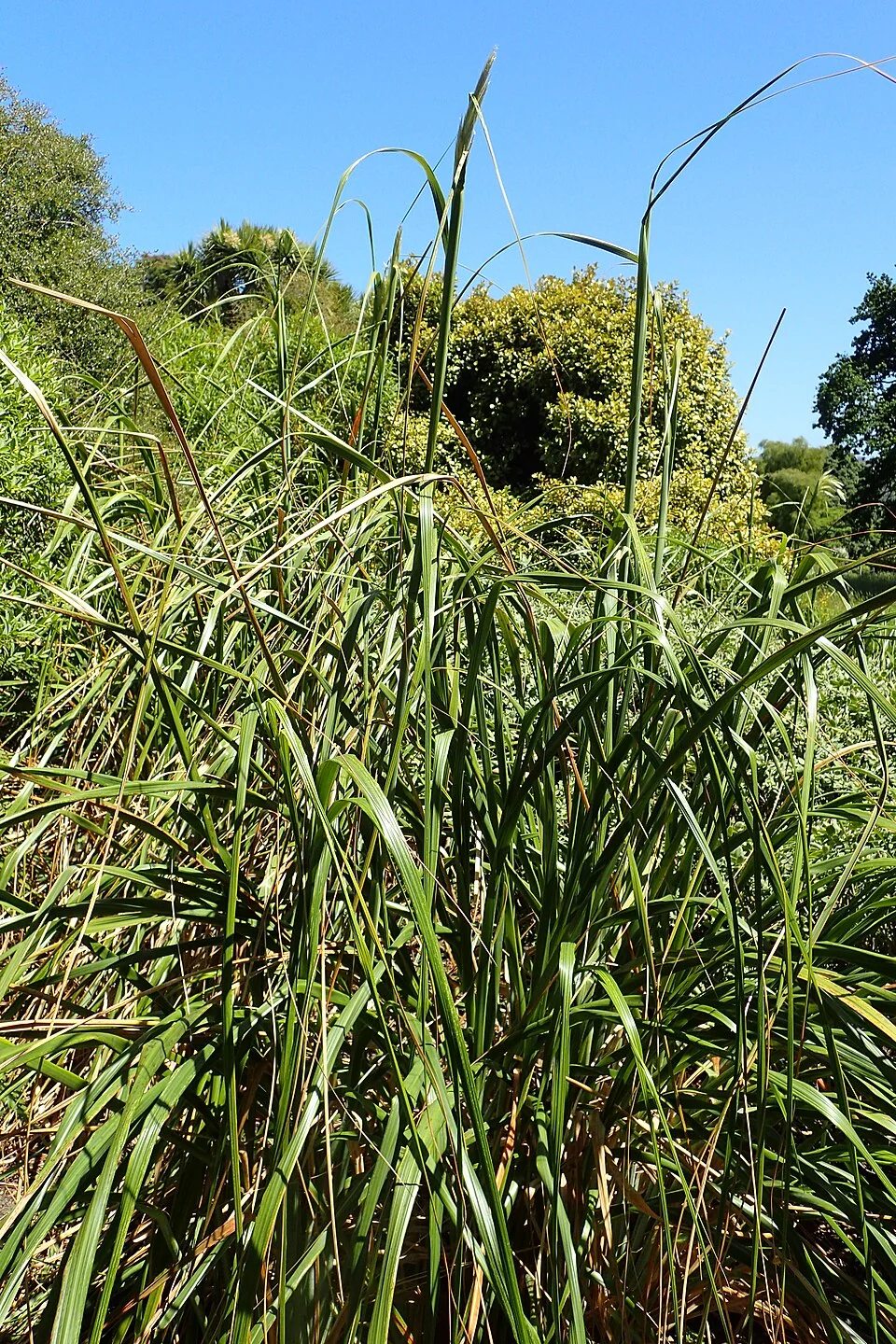
South Island Toetoe
Austroderia richardii
South Island toetoe forming large clumps with tall, feathery plumes. Full sun and sharp drainage suit best; tolerant of coastal exposure. Distinguish from pampas by leaf midrib and plume structure/season. grasses .

Plant Description
Austroderia richardii (South Island toetoe) is a tall, gracile, tussock‑forming grass that develops dense clumps of arching, narrow leaves and produces elegant, pendulous, feathery plumes on stems up to 3 m in flower. Leaf sheaths are glabrous and often coated in a white bloom; leaf blades are tough and scabrid with minute prickle teeth, especially along the midrib. The inflorescences are narrow, pennant‑like and drooping, with numerous spikelets in plume‑like panicles. Native toetoe is frequently confused with invasive pampas (Cortaderia spp.), but can be distinguished by its slender, drooping plumes, leaf sheath and culm colours, and by flowering season.
Quick Facts
| Scientific Name | Austroderia richardii |
|---|---|
| Form | Large tussock; tall plumes |
| Light | Full sun |
| Soil | Free-draining; coastal sands to gravel |
| Tolerance | Wind, coastal exposure |
| Height | 20-80 cm (tufting) |
| Spread | Clump-forming to 40-60 cm |
| Water Needs | Low to moderate; free-draining soils |
| Frost Tolerance | High - tolerant of severe freezes |
| Salt Tolerance | Moderate to high (coastal species) |
| Growth Rate | Slow to moderate |
| Lifespan | Long-lived perennial |
Climate Suitability
Endemic to Aotearoa New Zealand and chiefly South Island in distribution, toetoe occupies a broad climatic range from coastal to subalpine zones. It thrives in cool to mild, windy temperate climates with regular rainfall and freely draining substrates that do not bake hard. It tolerates maritime exposure and periodic drought once established, but forms its strongest plumes with reliable moisture and full sun.
| City | Climate Suitability |
|---|---|
| Whangārei | Suitable |
| Auckland | Suitable |
| Hamilton | Suitable |
| Tauranga | Suitable |
| Rotorua | Suitable |
| Gisborne | Suitable |
| New Plymouth | Suitable |
| Napier | Suitable |
| Whanganui | Suitable |
| Palmerston North | Suitable |
| Wellington | Suitable |
| Nelson | Suitable |
| Christchurch | Suitable |
| Dunedin | Suitable |
| Invercargill | Suitable |
Habitat
Natural Distribution
Toetoe is abundant from the coast to subalpine areas. It is common along stream banks, river beds, lake margins and other wet places where moving water and fresh gravels create open sites for establishment. It also occurs on dunes, notably around Foveaux Strait, and on alluvial terraces where it can stabilise substrates with its fibrous root system.
Conservation Status
Current Threats and Protection
Assessed as Not Threatened nationally. Key management issues include preventing confusion with invasive pampas (Cortaderia selloana and C. jubata) in plantings and restoration, and maintaining natural river dynamics and dune processes that create the open habitats it favours. Regional weed control programmes should retain native toetoe while targeting pampas.
Growing Requirements
Soil
Highly adaptable; grows in sand, loam, or clay. Tolerates poor soils but thrives in well-drained, fertile ground.
Light
Full sun to partial shade. Hardy to cold and wind, making it excellent for exposed southern sites.
Water
Moderate water needs. Tolerates both dry and damp conditions once established.
Planting Guide
Planting Austroderia richardii is best done in early spring or autumn to allow roots to establish before extreme temperatures.
Site Selection
Choose a sunny location with plenty of space, as clumps can spread up to 2 meters wide. While it adapts to various soil types, free-draining soil is preferred to prevent root rot. It is an excellent choice for exposed coastal sites or windy banks.
Planting Steps
- Dig a hole twice the width of the root ball and of the same depth.
- Gently loosen the roots if they are pot-bound.
- Place the plant in the hole, ensuring the crown is level with or slightly above the soil surface.
- Backfill with soil, firming it gently around the base.
- Water thoroughly to settle the soil.
- Apply a layer of mulch around the base to retain moisture and suppress weeds, keeping it away from the crown itself.
Ecological Role
Environmental Benefits
In riparian and dune systems, toetoe provides strong vertical structure, shelter and forage. Its dense bases trap silt and sand, aiding bank and dune stabilisation, while the plumes offer seed and nesting material for birds. By colonising open gravels, it helps initiate native succession.
Uses
Traditional and Modern Applications
An architectural native grass for large gardens, public landscapes and restoration. Use as specimen clumps, wind‑tolerant screens, or massed on dunes and river terraces to stabilise soils. In amenity plantings, label clearly as native toetoe and avoid confusion with pampas.
Landscaping Uses
Garden Design Applications
Excellent for rock gardens, alpine collections, and naturalistic plantings. Best used in open, well-drained positions where its distinctive form can be appreciated. Combines well with other native alpine plants and provides year-round structure. Consider placement carefully due to sharp foliage - avoid high-traffic areas. Creates dramatic focal points in contemporary and native-themed garden designs.
Seasonal Care
Year-Round Maintenance
Spring: establish new plants with regular deep watering and weed suppression. Summer: drought‑tolerant once established, but occasional irrigation improves plume quality. Autumn: groom clumps and remove spent plumes; divide or transplant only if necessary. Winter: ensure drainage around crowns and avoid cutting back hard unless rejuvenation is needed.
Pruning
Pruning Techniques
Remove spent inflorescences near the base once plumes age, and strip away dead outer leaves to reveal fresh growth. Avoid shearing across green blades; if rejuvenation is required, cut old foliage low in late winter just before spring growth.
How to Grow South Island Toetoe
From Seed
Austroderia richardii is easily propagated from fresh seed. Collect seeds from the mature, feathery plumes when they are ripe and dry in late summer to autumn. Sow the seeds directly onto the surface of a moist, well-draining seed-raising mix. A very light covering of fine seedling mix or sand can be applied, but ensure some light reaches the seeds. Maintain consistent moisture in a warm, bright spot. Germination is usually rapid, typically occurring within 2-3 weeks. Once seedlings are large enough to handle, prick them out into individual pots or trays. For large-scale revegetation projects, entire seed heads can be pinned to damp, prepared soil where seeds will naturally germinate and establish.
From Division
Division of established clumps is an effective method for propagating Austroderia richardii and is also useful for rejuvenating older, dense plants. This is best done in spring or autumn. Carefully lift a mature plant from its growing position. Using a sharp spade or knife, split the root ball into smaller sections, ensuring each division has a healthy portion of roots and several shoots or "fans" of leaves. Replant the divisions immediately into their permanent locations or into pots. Water thoroughly after replanting to help them establish, and keep them consistently moist until new growth is evident. Note that established plants are long-lived and seldom require frequent division.
General Cultivation
South Island Toetoe is a robust and highly adaptable grass, ideally suited for a variety of landscaping and restoration purposes. It thrives in open, sunny locations, which promote optimal plume development. While it adapts to a wide range of soil types, excellent drainage is crucial; it performs best in free-draining soils, from coastal sands to alluvial gravels. To prepare a planting site, clear all weeds and, for heavy clay soils, amend with coarse sand or gravel to enhance drainage. Plant container-grown specimens at the same depth as they were in their pot, ensuring the crown sits slightly proud of the soil level to prevent waterlogging. Space plants approximately 1-1.5 meters apart to allow for their mature spread of 1.2-1.5 meters. Water new plants regularly during their first growing season to ensure deep root establishment. Once established, Austroderia richardii becomes remarkably drought-tolerant and requires minimal ongoing care. Pruning in early spring to remove older, dried foliage and spent flower stalks helps maintain a tidy appearance, improves air circulation, and encourages vigorous new growth. Always wear gloves and long sleeves when handling Toetoe due to its sharp leaf margins.
Pests and Diseases
Common Problems and Solutions
Toetoe are iconic elements of New Zealand landscapes and play a practical role in stabilising dunes and river margins. In restoration, correctly using native Austroderia instead of invasive pampas maintains ecological integrity and supports native biodiversity.
Cultural Significance
Traditional Uses and Values
Toetoe have cultural and landscape value across Aotearoa. The dramatic plumes mark seasonal change and have been used decoratively, while robust leaves can be woven or used for practical purposes. Choosing native toetoe for amenity plantings and restoration, and avoiding invasive pampas, supports local biodiversity and preserves the character of New Zealand’s coastal and riverine scenery.
Bonus Tip
South Island Hardy
Austroderia richardii is the tough, cold-hardy Toetoe of the South Island. It is distinguished by its smaller overall size compared to northern species and its elegant, champagne-coloured plumes that appear in late spring and summer. It is an excellent windbreak plant for Canterbury and Otago gardens.







